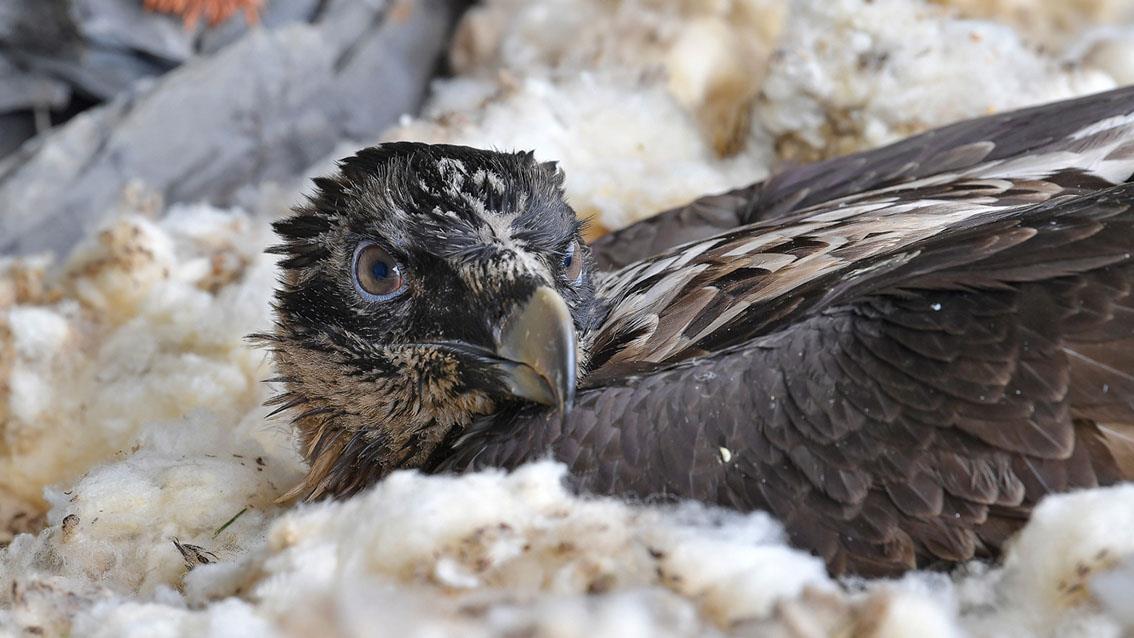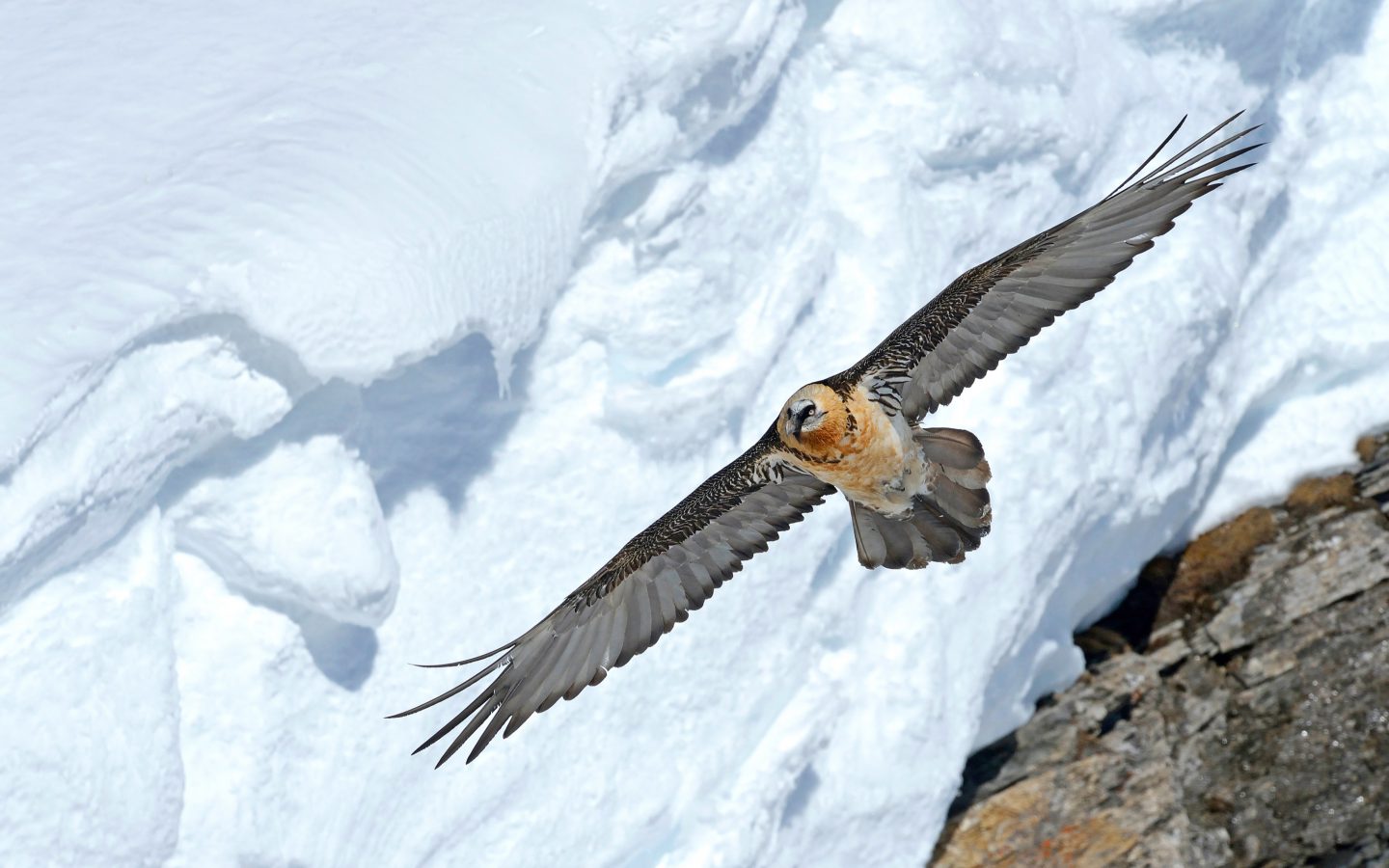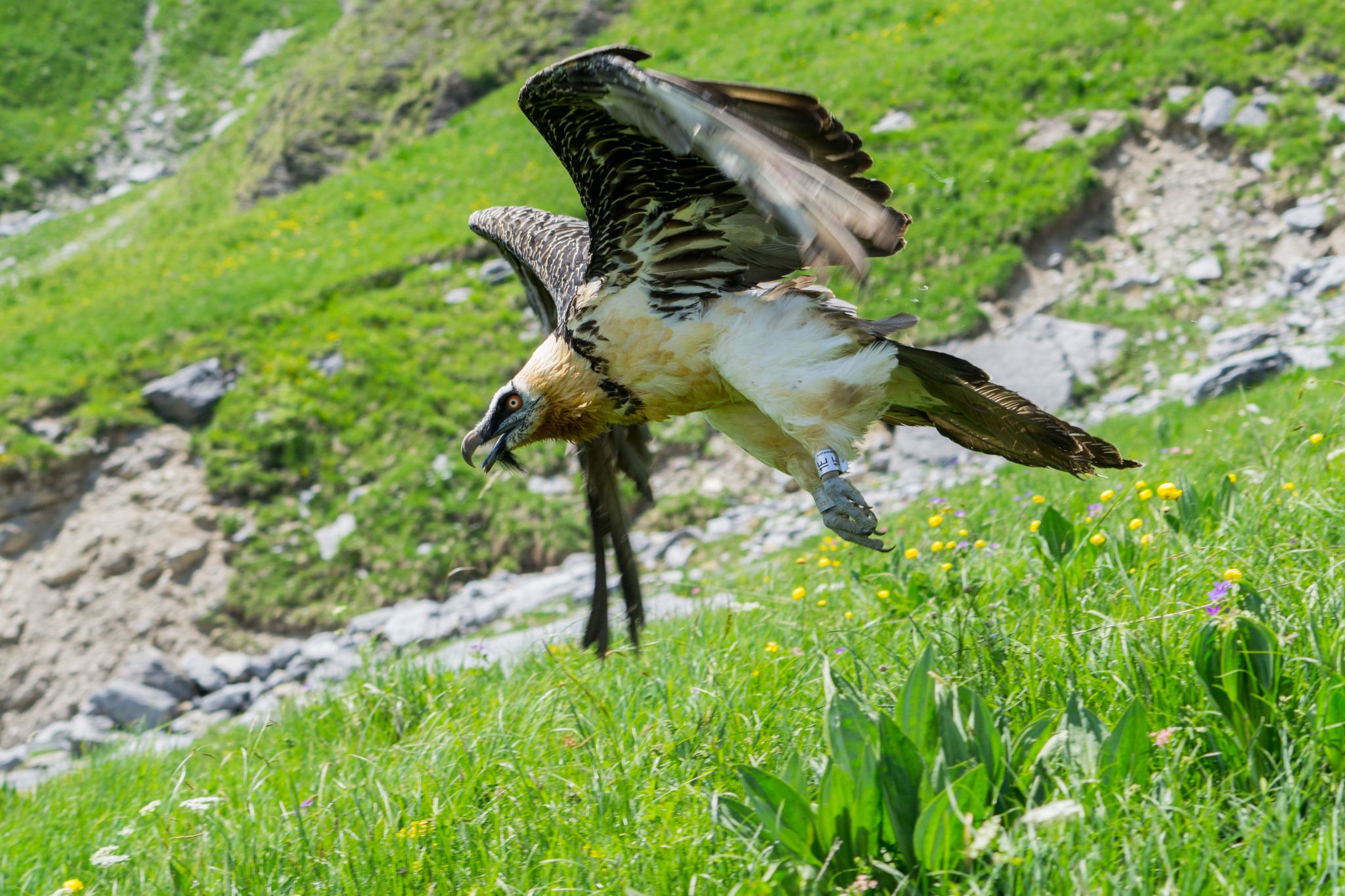This year we celebrate over one hundred Bearded Vultures breeding pairs in the Alps. This result stems from years of conservation efforts started in the 1970s. Successful reintroductions and targeted threat-mitigation actions allowed the species to recover and thrive, demonstrating the effectiveness of conservation practices and international cooperation.
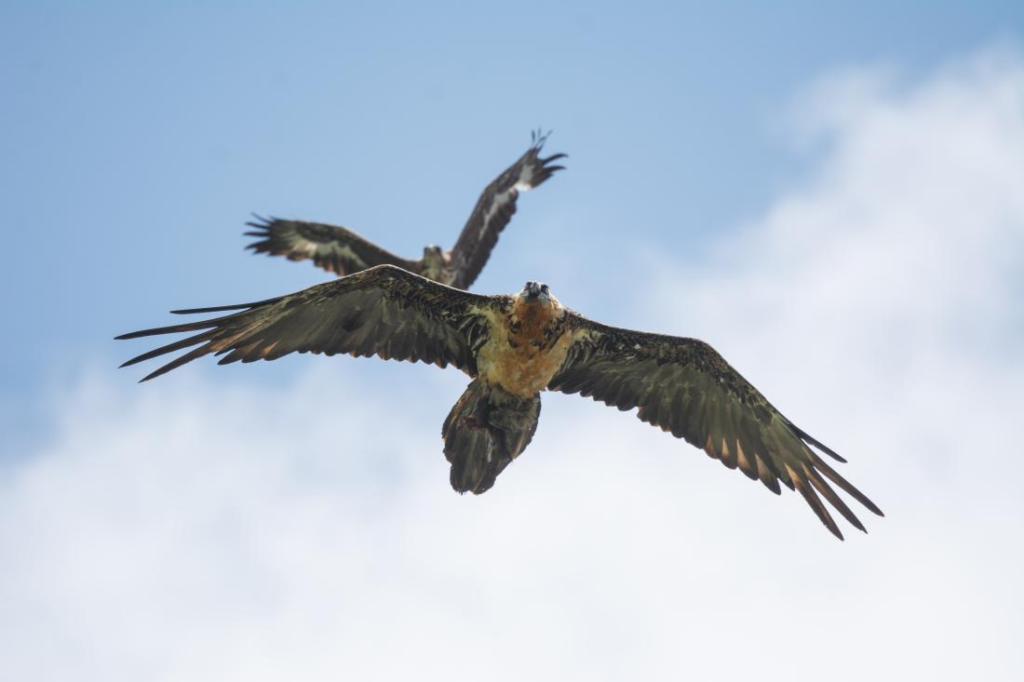
Story of a success
At the beginning of the 20th century, Bearded Vultures (Gypaetus barbatus) were actively persecuted in the Alps. Local superstitions depicted them as dangerous birds known for killing lambs and attacking babies. These old wives’ tales could not be farther from the truth, but they still drove the species to extinction. In 1913, the last Bearded Vulture in the Alps was shot in the Aosta Valley (Italy).
Sixty years after that terrible record, conservationists joined forces to bring the species back from extinction. The first reintroduction took place in 1986. Bearded Vultures hatched and reared in captivity were released into the wild, hoping that they will start recolonizing their old territories. In 1997 the first chick hatched in the wild, giving the species a true chance of recovering. Almost 30 years have passed, and the Bearded Vultures population in the Alps is now the second largest in Europe after the Pyrenean population.
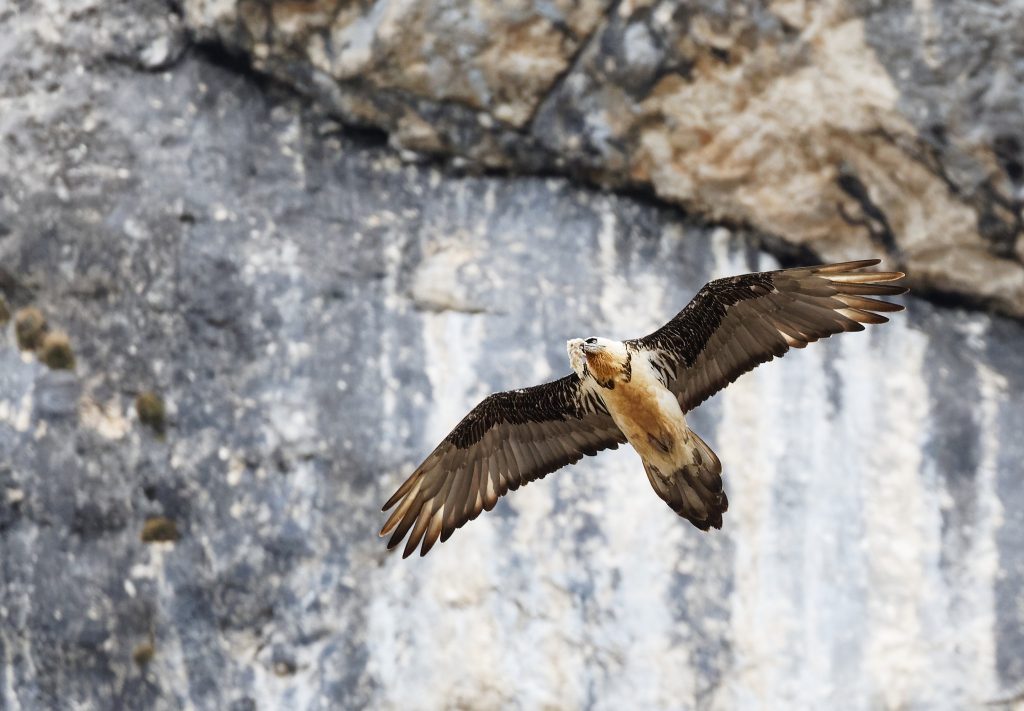
The Alpine population hits two major milestones
This year the Bearded Vultures population in the Alps counts over 100 reproductive pairs. The International Bearded Vulture Monitoring Network (IBM) registers not only a population growth, but also an expansion of the species distribution range. Some areas of the Alps finally host Bearded Vultures for the first time in 150 years. These are two major milestones that demonstrate the success of the reintroduction and protection programmes.
2025 breeding season is not over yet, but it is already registering promising numbers. A study from D. Santos-Cottin, B. Arroyo, F. Loercher, A. Brambilla, and J. Terraube recently analysed the Bearded Vultures breeding success in the Alps, highlighting the causes behind this very positive trend. While the reintroduction programme has been a major success, the number of released birds is not a predicting factor for breeding performance. According to the study, breeding success depends on a combination of individual and environmental factors. Long-time bonded pairs and pairs formed by wild-hatched birds have higher reproductive success. The nest elevation and the presence of protected areas also positively influence the breeding success.



Keeping the eyes on the long-term goal
As we collectively celebrate this year success, we should remember that Bearded Vultures are still Near Threatened globally (IUCN Red List). Our work is far from being over.
Even though the species is not actively persecuted anymore, anthropogenic threats like veterinary drugs residues in carcasses, lead, power lines and wind turbines collisions and habitat degradation are still taking a major toll on the species worldwide. In addition, this long-lived species has a very slow breeding rate. Each breeding pair lays one or two eggs per year, but only one chick survives. The success rate of breeding pairs is around 60-70%. This means that an average of two-thirds of breeding pairs manages to raise a chick each year. Every vulture lost to one of the above-mentioned threats has a strong impact on the survival of the entire species.
Today we take our time to rejoice in seeing Bearded Vultures population grow and expand in the Alps. Tomorrow we will be back at work, creating a safer environment for this species to thrive in Europe and beyond.
International Bearded Vulture Monitoring Network

La International Bearded Vulture Monitoring Network (IBM) is a unique international collaboration between national & natural parks and non-governmental organisations, coordinated by the Vulture Conservation Foundation (VCF), to monitor the population of the Bearded Vulture in Europe.
The IBM-network collects, shares and makes available Bearded Vulture data to everyone working for the species’ conservation. It also uses this data and discusses conservation strategies and priorities for this species worldwide. There are currently 18 partners and two associated organisations part of the IBM-network.

